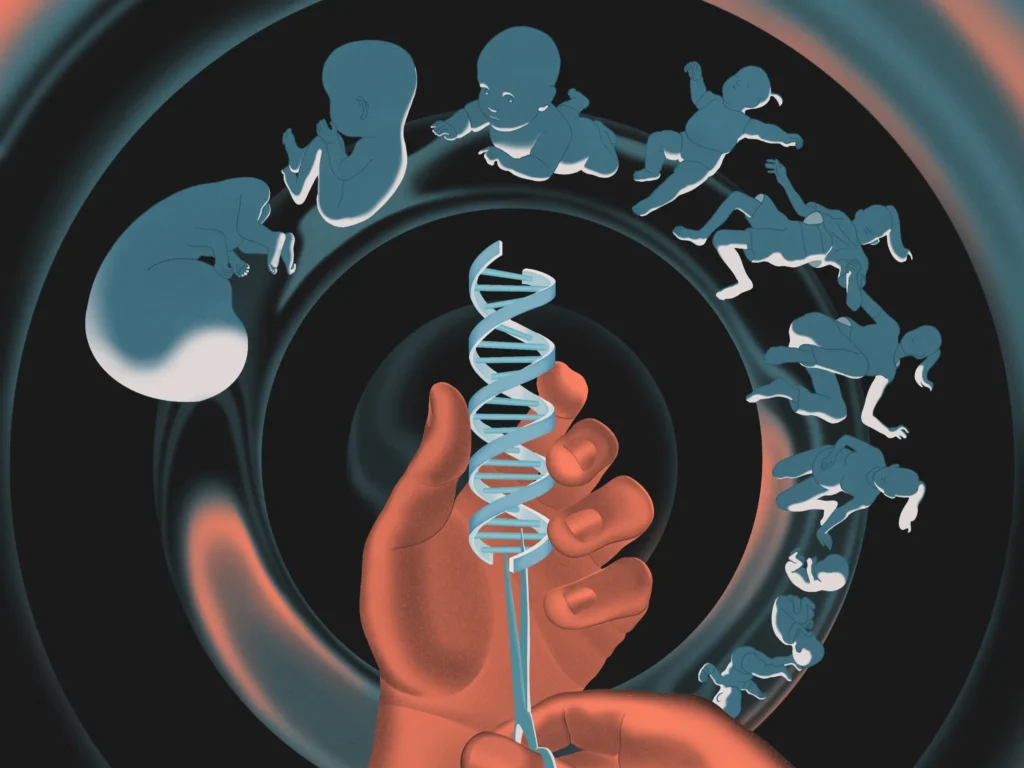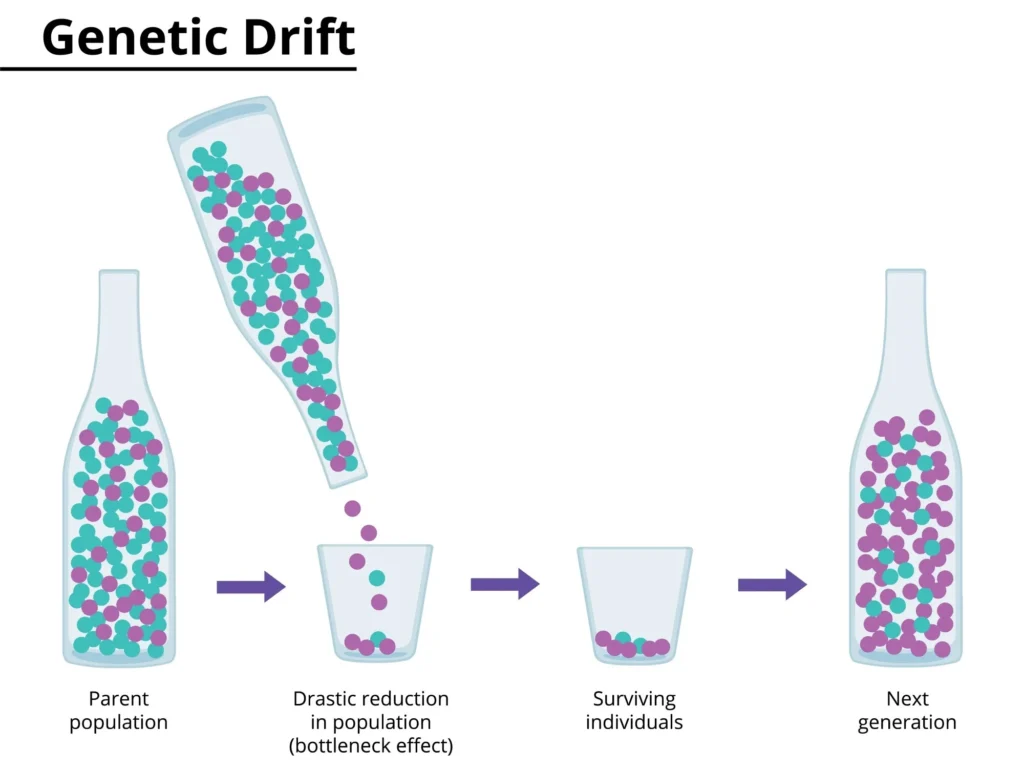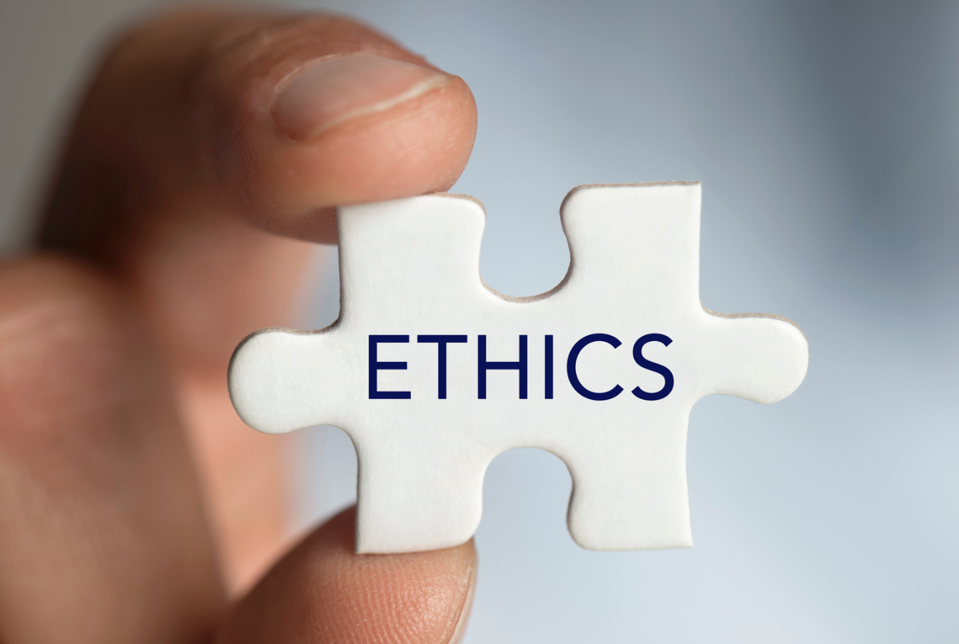A revolutionary branch of biotechnology that gives organisms like humans, animals, and plants the ability to alter their genetic makeup. The fields of agriculture, industry, and medicine will all be greatly affected by this technology. However, having the ability to alter the fundamental components of life raises significant ethical issues. Human gene editing, genetically modified organisms (GMOs), and the potential consequences of these technologies are the primary focus of this case study, which examines the ethical concerns associated with genetic engineering.
An Overview of the History and Context of Genetic Engineering:
The process of altering an organism’s characteristics by manipulating its DNA is known as genetic engineering. It is now possible to precisely alter genes thanks to powerful gene-editing tools like CRISPR-Cas9, which have led to advancements in agriculture, medicine, and other fields.
Change in the Past:
The development of recombinant DNA technology marked the beginning of the field of genetic engineering in the 1970s. Advances in gene therapy, genetically modified crops, and, most recently, gene editing technologies like CRISPR have emerged as a result of the field’s development over the past few decades.
Concerns about ethics are emerging:
Ethical issues have grown as genetic engineering technologies have developed. These concerns concern the morality of altering life forms, the possibility of unintended consequences, and the repercussions for society and future generations.
Human Gene Editing: Ethical Considerations in Genetic Engineering

One of the most contentious areas of genetic engineering is human gene editing, especially germline editing, which involves making changes to DNA that can be passed down to future generations.
Problem with Ethics: The possibility of eugenics, the risk of creating a genetic underclass, and “playing God” are all raised by the capability to edit the human genome. While gene editing has the potential to eradicate hereditary diseases, it also carries the risk of unintended genetic mutations and unknown long-term consequences.
Case Study: He Jiankui, a Chinese scientist, claimed to have used CRISPR-Cas9 to make the babies HIV-resistant in 2018 and announced the birth of the world’s first gene-edited babies. As a result of this announcement, a debate regarding the morality of editing human embryos ensued. He was imprisoned and calls for stricter regulations on human gene editing were made as a result of numerous scientists and ethicists’ condemnation of the experiment as premature and unethical.
Organisms with genetic modifications (GMOs):

In agriculture, genetic engineering has been widely used to create genetically modified organisms (GMOs) that are resistant to environmental conditions, diseases, and pests. However, significant ethical and environmental concerns have arisen as a result of the use of GMOs.
Problem with Ethics: Concerns about the safety of genetically modified foods, the possibility of harm to the environment, and the ethics of patenting life forms arise from the production and use of GMOs. Farmers, particularly those in developing nations, who may become dependent on patented seeds and agricultural technologies controlled by large corporations are also the subject of debate regarding the impact on their socioeconomic status.
Case Study: Due to its genetically modified crops and the associated herbicide, glyphosate, Monsanto, a leading agricultural biotechnology company, has faced widespread criticism and legal challenges. Through the enforcement of patents on genetically modified seeds, critics contend that Monsanto’s practices have resulted in environmental harm, biodiversity loss, and financial difficulties for farmers.
Genetic augmentation and designer infants:

A significant ethical challenge lies in the possibility of using genetic engineering to produce “designer babies,” from which parents could select characteristics such as intelligence, physical appearance, or athletic ability.
Problem with Ethics: Concerns about social inequality, the commodification of human life, and the possible loss of genetic diversity arise from genetic enhancement. The ability to select particular characteristics may result in a society in which some traits are valued more highly than others, thereby exacerbate existing social inequality.
Case Study: After the development of CRISPR technology, which could theoretically be used to enhance human traits, the debate over designer babies intensified. Pundits contend that such upgrades could prompt another type of selective breeding, where just the people who can manage the cost of hereditary improvements approach them, making a hereditary gap in the public eye.
Genetic engineering of animals:
In addition, genetic engineering is used to alter animals for a variety of purposes, including pharmaceutical manufacturing, agriculture, and medical research. Concerning the well-being of genetically modified animals, these practices raise ethical issues.
Problem with Ethics: Concerns about animal rights, the possibility of suffering, and the moral implications of altering animals for the benefit of humans arise from the use of animals in genetic engineering. Additionally, there are concerns regarding the ecological impact of interacting genetically modified animals with wild populations.
Case Study: The ethicality of altering animals for agricultural efficiency has been the subject of debate since the creation of genetically modified animals like the “EnviroPig,” which was designed to produce less phosphorus in its waste. These modifications, according to critics, place animal welfare and ecological balance ahead of economic benefits.
Consequences Unexpected and Genetic Drift:

A major ethical concern in genetic engineering is the possibility of unintended outcomes, such as off-target effects in gene editing or the unanticipated spread of genetically modified genes.
Problem with Ethics: The chance of accidental transformations or hereditary float, where designed qualities spread wildly in the climate, raises worries about natural damage and the drawn out influences on biodiversity. In these discussions, the precautionary principle, which advises erring on the side of caution in the face of uncertainty, is frequently cited.
Case Study: Concerns about the potential for unintended ecological effects have been raised as a result of the release of genetically modified mosquitoes that were created to combat malaria and other diseases. Critics are concerned about the long-term impact on ecosystems and the possibility of unforeseen outcomes, despite the fact that the objective is to stop the spread of disease.
Managing Ethical Issues Regulation and Control:

Genetic engineering must be regulated and governed ethically by international organizations and governments. Safety, the impact on the environment, and the ethical implications of altering life should all be addressed in these regulations.
Case Study: An illustration of efforts to establish a global framework for responsible genetic engineering is the establishment of the International Summit on Human Gene Editing, which brings together scientists, ethicists, and policymakers to discuss the ethical difficulties associated with gene editing.
Education and Public Participation:
When it comes to addressing the ethical issues raised by genetic engineering, both educated public discussion and debate are essential. It is possible to foster trust and ensure that ethical considerations are taken into account by involving the general public in discussions regarding the potential advantages and disadvantages of genetic technologies.
Case Study: Public discussions and consultations, such as those on the use of genetically modified organisms (GMOs) and gene editing that take place in the United Kingdom and other nations, provide a forum for a variety of viewpoints and assist in directing ethical decision-making.
Boards of Ethical Review:

Genetic engineering projects can benefit from the oversight and direction of ethical review boards, which are comprised of representatives of the community, ethicists, and scientists. These boards are able to assess the potential benefits and risks of proposed research and guarantee the upholding of ethical standards.
Case Study: Genetic engineering research is reviewed and monitored by institutional review boards (IRBs) to ensure that ethical standards are met, particularly in studies involving human subjects.
Cooperation with other nations:
In order to address the global ethical issues that arise from genetic engineering, international cooperation is absolutely necessary. International norms and standards for the responsible use of genetic technologies can be established through collaborative efforts.
Case Study: An effort to manage the risks associated with genetic engineering on a global scale is represented by the Cartagena Protocol on Biosafety, an international agreement that regulates the movement of genetically modified organisms across borders.
Conclusion
Concerns about human dignity, environmental sustainability, social justice, and the responsible use of technology are just a few of the complex and multifaceted ethical issues associated with genetic engineering. It is essential to strike a balance between the potential benefits and the ethical challenges posed by genetic engineering as it advances. Through guideline, public commitment, moral oversight, and worldwide collaboration, society can explore the moral problems of hereditary designing and guarantee that these strong innovations are utilized dependably and for everyone’s best interests.



